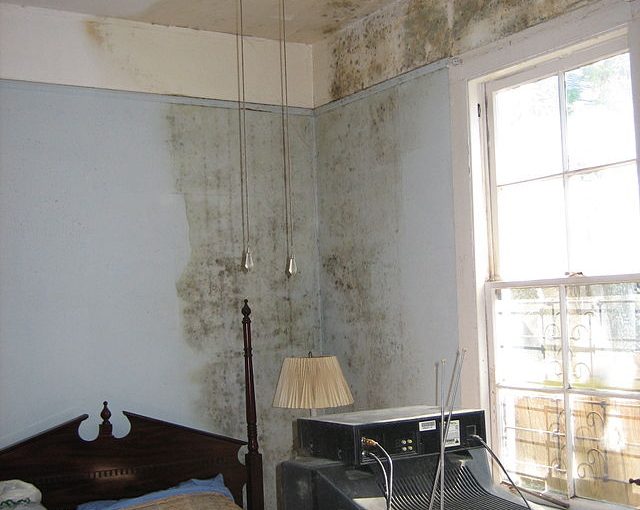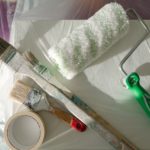Damp proofing and the most common types of damp:
Identifying damp on your living room wall or having a survey come back that indicates damp problems can be worrying. Damp proofing is something that the average property owner knows very little about. Most of us will have heard the words ‘damp proof course’, but many people are unsure as to whether it’s a damp treatment or an educational course.
How do I know if my property requires damp proofing?
Visible damp patches on interior walls, as well as wallpaper peeling, lifting or cracking are all common signs of damp. But there’s no need to panic, as not all damp problems are expensive or complex to repair. If you do notice signs of damp, it’s important that you take action as soon as possible; ignoring the damp problem may make it worse and result in more expensive repairs further down the line. If you are unsure as to whether your property requires damp proofing, it’s recommended that you get in touch with damp proofing specialists like https://protenservices.co.uk/local-branches/nottingham/
Damp problems can be broken down into three main categories, these are:
Rising Damp
This is the rarer of the three damp problems listed and is regularly misdiagnosed by homeowners. Rising damp occurs when water is allowed to enter a structure via the pours in the masonry. Mortar beds tend to be the most absorbent area of the wall, causing the damp to rise upwards via capillary action from below the ground. Capillary action occurs when water molecules are attracted to the molecules of mineral surfaces.
Rising damp usually occurs when water is sucked upwards into masonry from ground level. This works in the same way that a sponge absorbs water when placed on a wet surface. The majority of houses have a damp proof course in place to prevent this. A damp proof course consists of layers of waterproof materials laid into the foundation walls of a property, near to the ground to prevent dampness from rising into the building.
Externally, mortar may start to crumble and salt stains might appear on walls. In extreme cases of rising damp, mortar and player may even fall away from the affected wall. Internally, crumbling plaster, peeling wallpaper and paint are all common problems associated with rising damp.
Penetrating Damp
This happens when water penetrates and soaks through walls. The most common causes of penetrating damp include external defects such as damaged brick, leaking 
Penetrating damp can cause damp patches to appear internally on floors, walls or ceilings and negative long term problems that include damage to interior decoration and the decay of plaster and timber. Unsightly mold and other fungal growth may also start to appear. Griffin Contracting & Restoration says, “The longer water damage goes untreated, the more problems arise; rot, mold and decay can destroy a home in ways the homeowner is completely unaware of until it occurs.”
Defects that lead to penetrating damp include:
- Porous bricks, after a while all bricks become porous.
- Roof defects such as Cracked slates, missing tiles or faulty flashing
- Faults in the masonry such as cracked pointing
- Obstructed downpipes
- Blocked weep holes
- Defective mastic around doors or windows
- A drip groove that is blocked with dirt, moss or cement
- Defective trays in cavity walls
Damp Caused by condensation
Condensation is the most common type of damp and is typically caused by moist air condensing on interior walls. It’s completely different from penetrating and rising damp in that it’s caused by excessive moisture that cannot escape, rather than damp coming in. The problem occurs the most at winter, as at this time of the year the walls are significantly colder than the air inside. In most cases condensation is caused as a result of inadequate ventilation and modern living issues.
Poor heating that comes on and off is another common cause of condensation, as this allows damp, warm air to condense. A tell tale sign that condensation is a problem is when mould begins to appear on interior walls, ceilings and furnishings. There is usually a musty damp smell and items in cupboards can become covered in a green or white furry mould. If left untreated, condensation can cause damage to paint, plaster and even cause window frames to decay.
5 Tips to prevent condensation:
- Open your windows everyday to keep your home well ventilated
- When cooking, always turn the extractor fans on a high power. This will allow them to extract excess moisture from pots, pans and other appliances.
- Always keep the lids on pots and pans when cooking; this will prevent moisture from escaping. If the lids are not kept on, the moisture will rise from the pans even if you cannot see it.
- If possible, dry your clothes outside. If you are unable to do this then dry them in an enclosed room with the window open.
- Always open your windows after taking a bath or shower; this will prevent condensation from forming on the windows. It’s also important that you keep the bathroom door shut as this will prevent moisture from escaping to other parts of your home.
Author by-line:
This article was contributed by David at Protectahome Ltd







